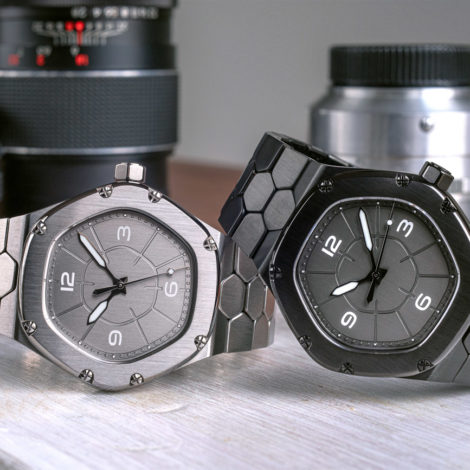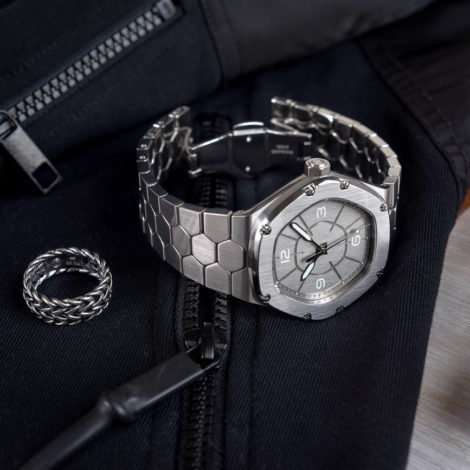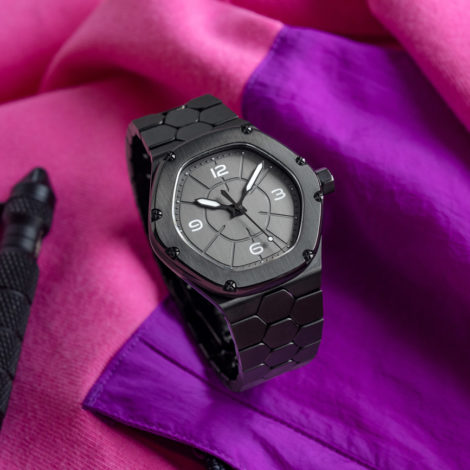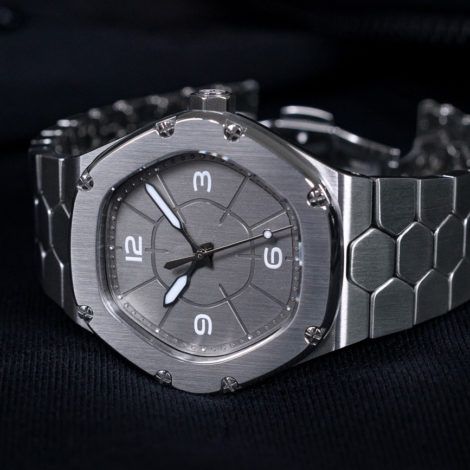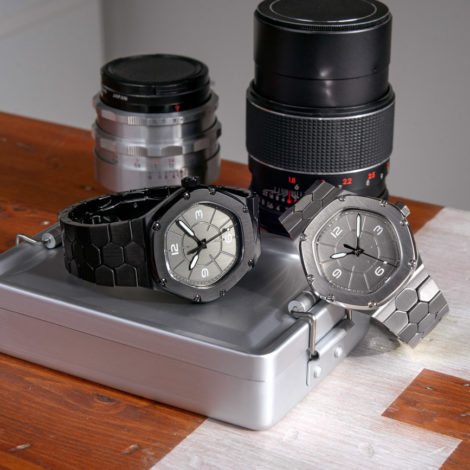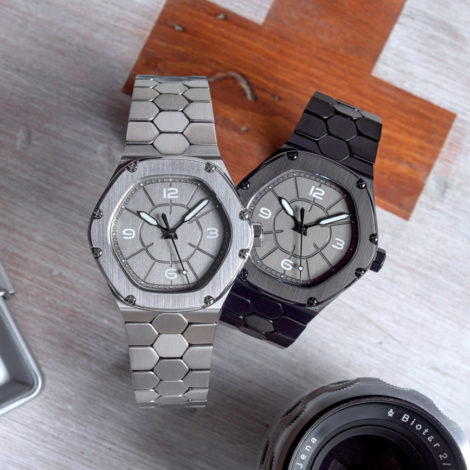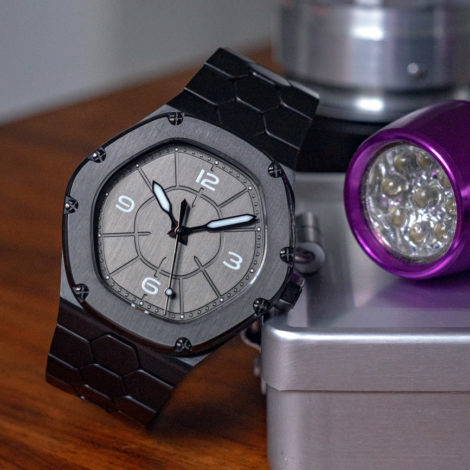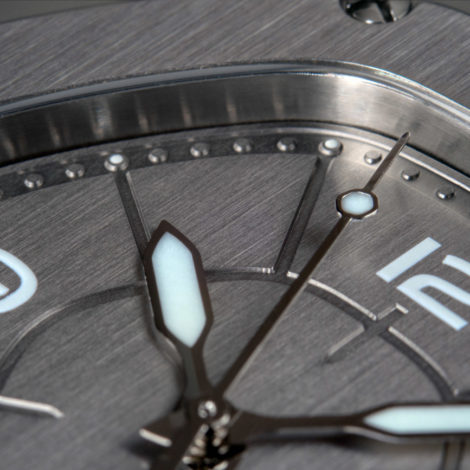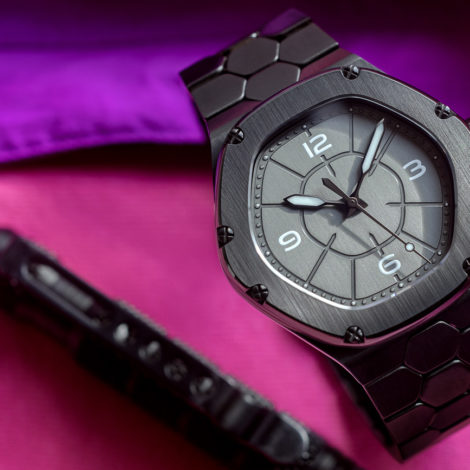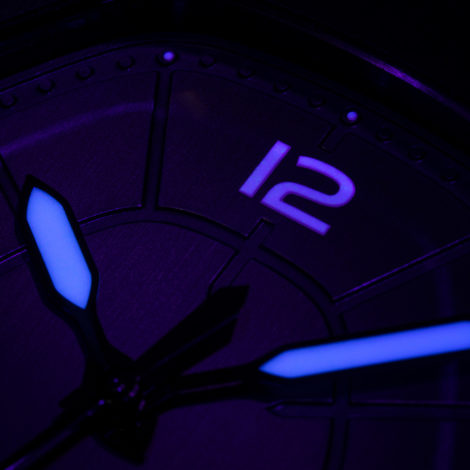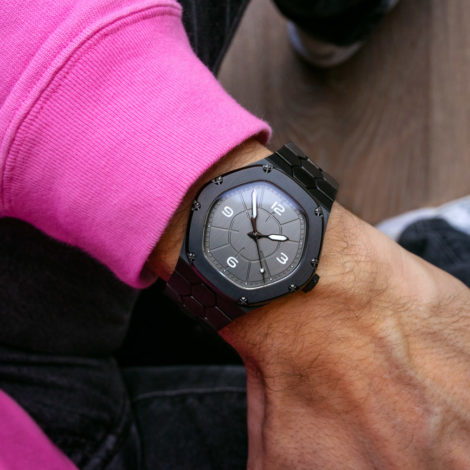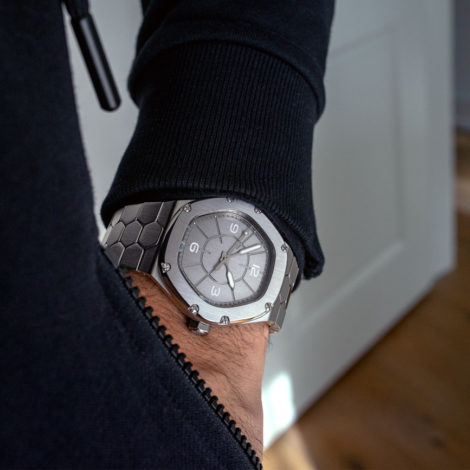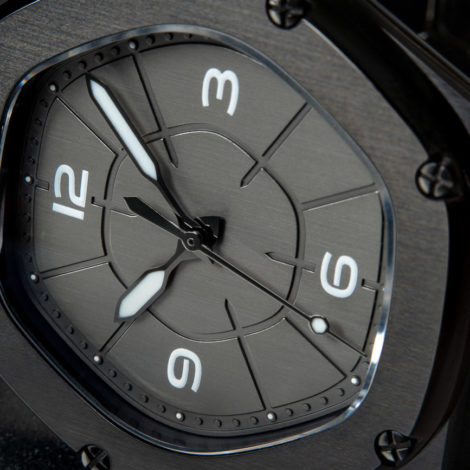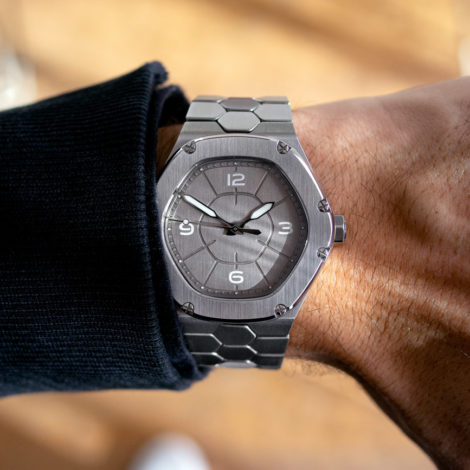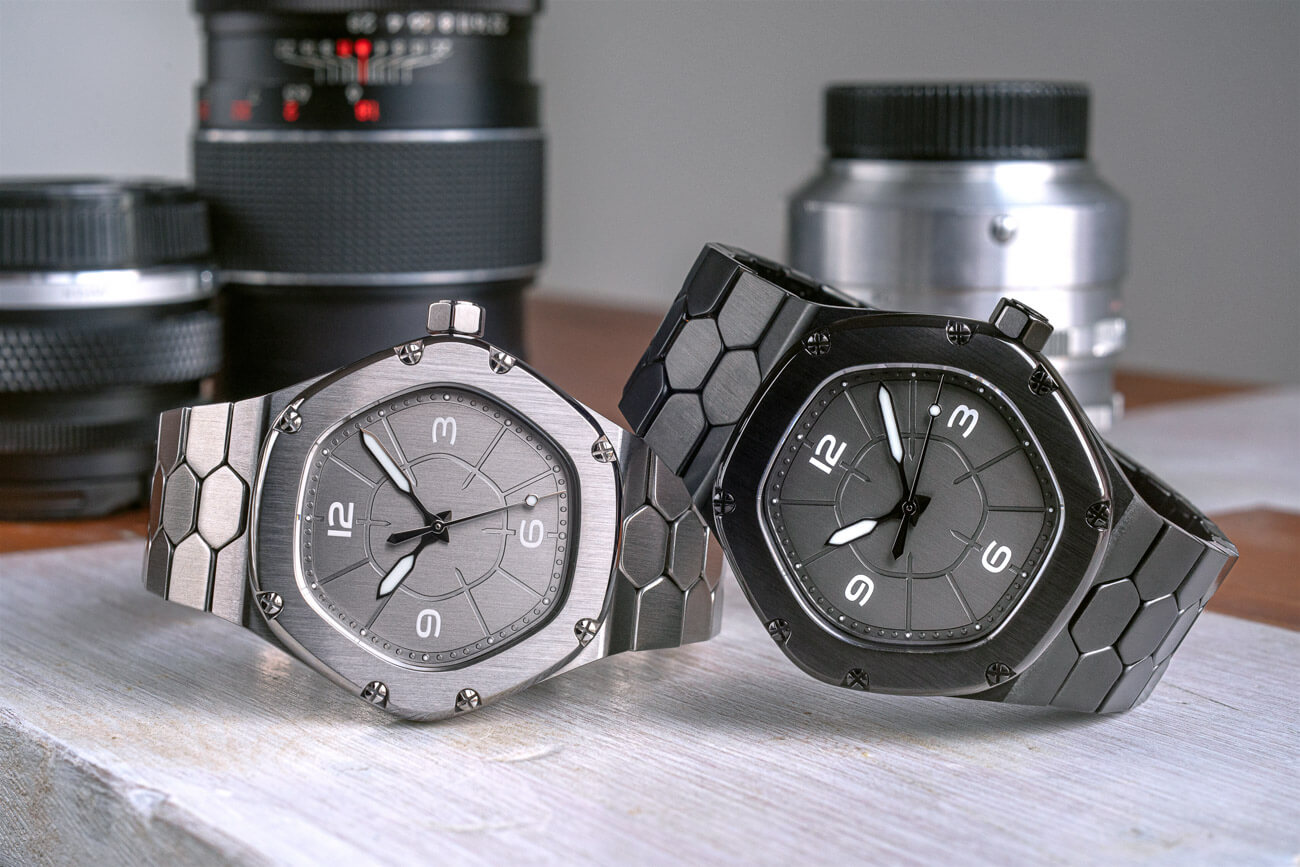 Sponsored post presented on aBlogtoWatch by advertiser
Sponsored post presented on aBlogtoWatch by advertiser
Today on aBlogtoWatch, we debut the Dietrich TC Pure wristwatch collection. The Dietrich TC Pure is produced by Swiss watchmaker Dietrich and represents a new flavor of the popular existing Dietrich TC-1 (“Time Companion 1”) product family. The watch is sold and produced entirely by Dietrich but was designed and conceived in direct collaboration with aBlogtoWatch, namely our Art Director Matt Smith-Johnson. The TC Pure would not have happened without a direct and personal relationship between Mr. Emmanuel Dietrich and Matt Smith-Johnson.
The pair met in person around 2017 at a small watch industry event where Dietrich was displaying timepieces. Smith-Johnson happened to be there and, as the story goes, he accidentally knocked over a “wobbly” watch display stand that Dietrich watches were secured on. No damage ensued, but it resulted in Matt Smith-Johnson later designing a brand new display concept for Dietrich — demonstrating to Mr. Dietrich that they shared a passion for design. The TC Pure project took well over a year, with the duo going back and forth on numerous designs. From a design perspective, Dietrich wanted a dial for the TC-1 that he himself could not come up with. He gave design direction and feedback to Smith-Johnson, who created the TC Pure dials for Dietrich’s direct approval. The result is a new “sterile” (no branding) watch face experience for the Dietrich TC product family.
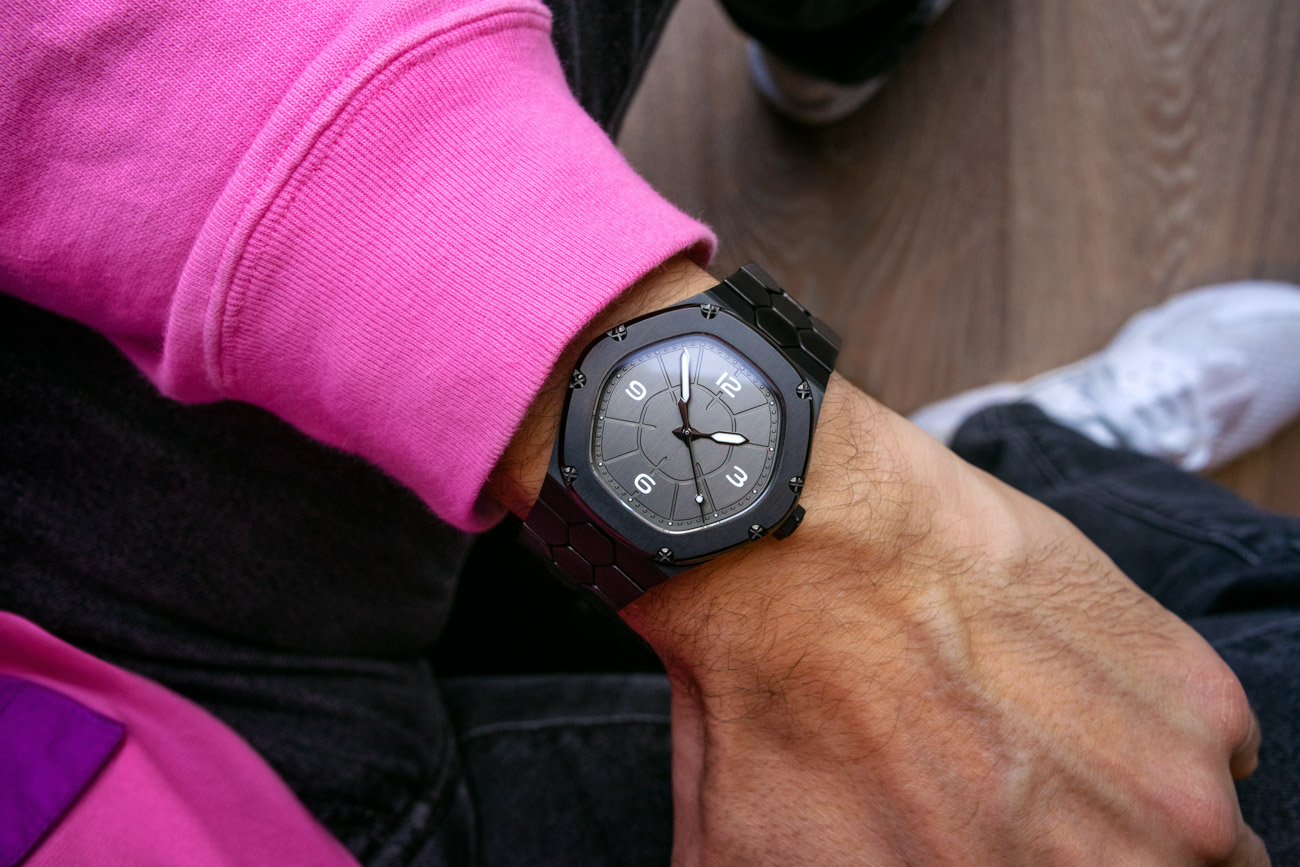
aBlogtoWatch’s Ariel Adams was the first timepiece writer to showcase the world of Emmanuel Dietrich online over a decade ago. Dietrich is an accomplished designer who, in the context of watches, brings a unique mixture of industrial design sensibility with a biomorphic aesthetic. He takes established principles of timepiece legibility, proportions, and ergonomic comfort and renders unique shapes and forms around them. Dietrich’s current most “mainstream” watches are within the TC-1 collection, which is designed to be an original take on the popular “integrated bracelet steel sports watch.”
This classification of watches that includes the Audemars Piguet Royal Oak and Patek Philippe Nautilus has proven to be exceptionally popular with timepieces consumers and collectors alike. This is due to their mix of fashionable versatility, unmistakably masculine looks, and a distinctive aesthetic. The TC-1 watch features a unique look on a popular theme, something Dietrich excels at. With the TC Pure, aBlogtoWatch wanted to create a new dial variation that even further refines the face of the TC collection down to its core properties using sophisticated tenets of minimalism. Hence the name Dietrich “TC Pure.”
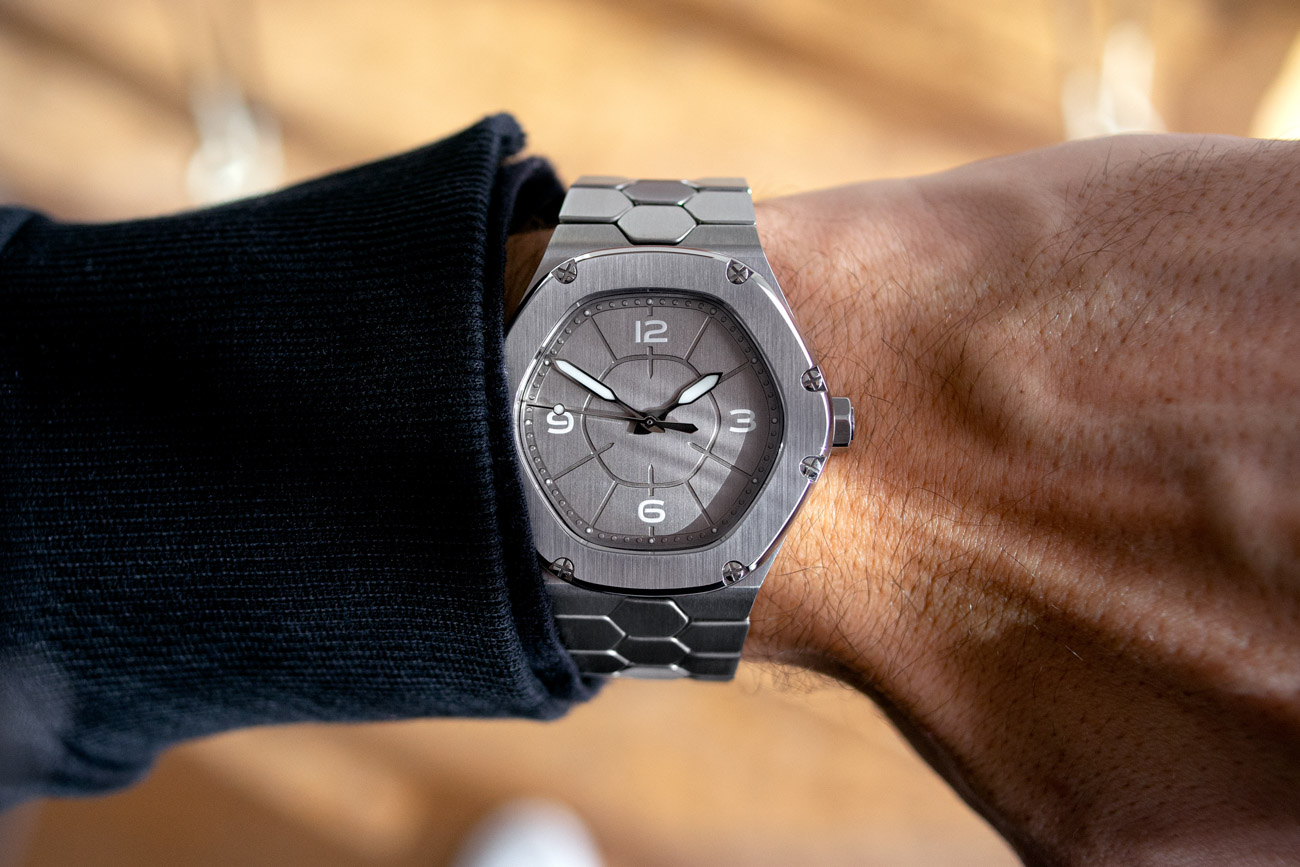
Dietrich and aBlogtoWatch have designed two versions of the TC Pure featuring the product in a natural steel case and bracelet or with a black-colored PVD coating. The watch is 42mm-wide, 9.3mm-thick, and wears smaller than the width might suggest given the narrow lug structure. The 50-meter water-resistant case has Dietrich’s signature hexagonal shape, which is mirrored in the design of the bracelet’s links. Inside the watch is a Swiss-made ETA 2824-2 automatic movement, of which only the time is displayed on the dial of the TC Pure. For a full look at the standard Dietrich TC-1 watch, you can read the aBlogtoWatch review here.
Now let’s hear from Emmanuel Dietrich and Matt Smith-Johnson about the TC Pure watches, as well as the design process that led to them.
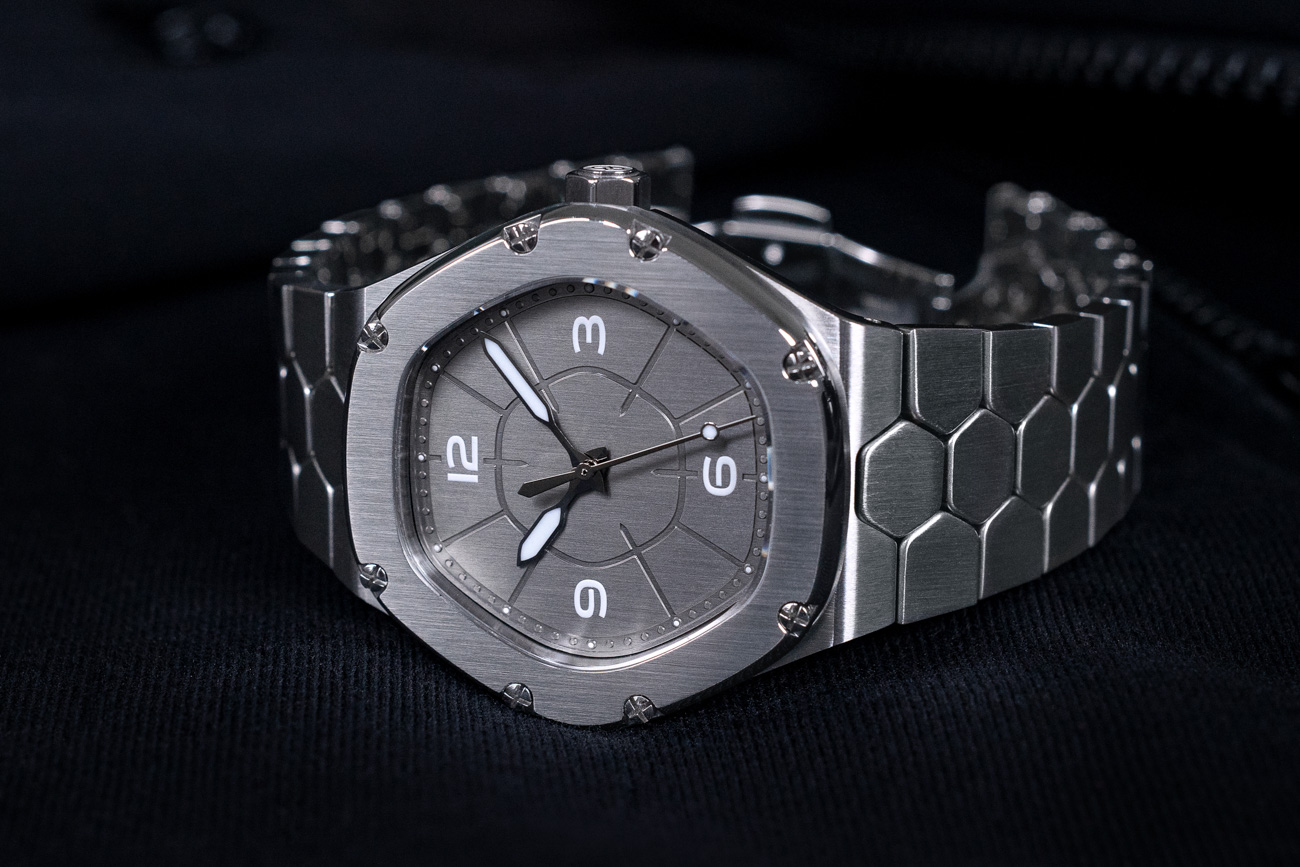
Ariel Adams (AA): Emmanuel, you are known to be both meticulous and protective of your unique design sensibility. What did it take to convince you to work with a third-party designer such as Matt to publicly offer a new variation on a watch design platform (the Time Companion) that took you years to develop and perfect?
Emmanuel Dietrich (ED): I am 100 percent a product designer and in this domain, for sure, I am quite protective. Or better said, I wouldn’t easily give up to the pleasure of designing an object. But saying that also indicates that I am primarily thinking in three dimensions. This is my strength. Imagining a form in space is as easier for me than for most other people to calculate or analyze. Each human has special capacities and can only be champion in the domains where we perform naturally. But in a complex context, if you want to make a top job, it is very important to know your limits and seek the help of people who have the same level of ability in the sub-domains you are lower-performing in.
For me, this limit is graphic design. Thinking in two dimensions is a different approach or mindset, even if it belongs to design. My passion for three dimensions led to designs like Organic Time, where the dial is freely composed like a small universe, not drawn on a flat surface as with a classic watch.
Knowing this, I sought first for the help of a typographer — the great Raymond Larabie from Typodermic Fonts, and had him design a beautifully balanced figures alphabet especially for my watch dials. (Standard fonts usually have figures that are not “stable” when used alone on a dial, with the result that the entire industry — even Rolex — uses almost the same classic Eurostile font. And this is one of the reasons for the success of vintage dials; their numbers were designed by hand and carefully balanced in a pre-computer era.)
A second logical step was to ask for a pure graphic designer like Matt to play with these figures and create a very strong graphic design that prolongs the DNA of the brand but explores territories I wouldn’t penetrate myself.
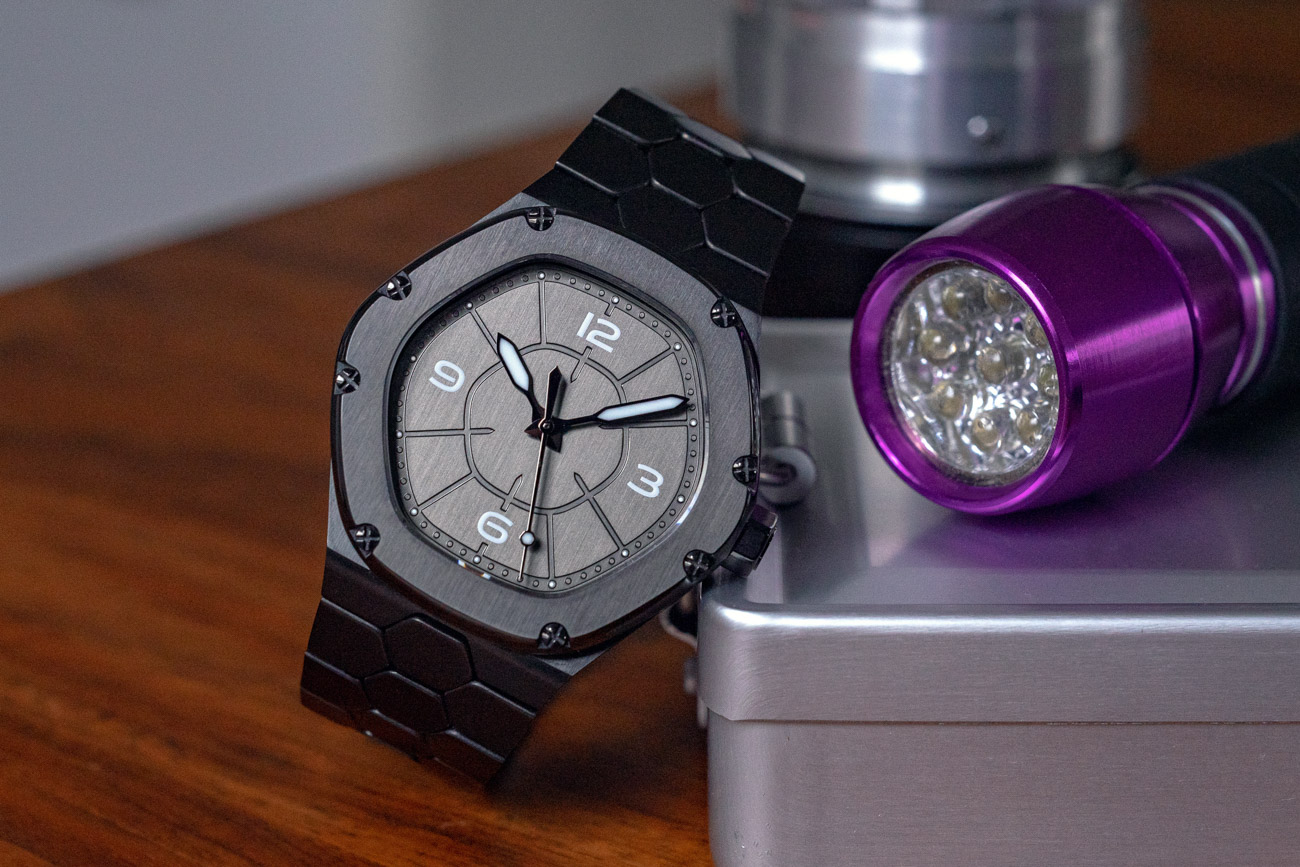
AA: Matt, over a number of conversations, you and Emmanuel learned that you had a lot in common. Tell me about some of the shared interests you two have and perhaps how some of your overlapping passions ended up in the TC Pure watches from a design or detailing perspective?
Matt Smith-Johnson (MSJ): When it comes to design, I think it’s fair to say we both enjoy the process itself. Working within a predetermined set of constraints and managing to make something different or unexpected brings great satisfaction to us both. For the brand and products of Dietrich, Emmanuel has built a visual language from the original Organic Time onward. In a way, he set up the constraints I ended up working within to design the TC Pure dial.
I’ve always been a fan of Dietrich watches, I even bought the first edition of the TC-1 as soon as it launched. This influenced me in a way I was initially unaware of. When designing the first few concepts, I was trying to predict or emulate what I felt Emmanuel would do. Almost as if I were following a strict design brief, ya know?
After presenting the first few concepts, Emmanuel brought up some of the logo work I have done. We had a call, and he said something like, “With these logos, you see how you do things so efficiently and minimal? That’s your style. That’s what you do naturally when working on your own — do something like that for me. That is what you can bring to Dietrich: something I wouldn’t think of.”
This really gave me the permission and confidence to just be myself. It changed the process for me, which led to the “TC Pure” you see here.
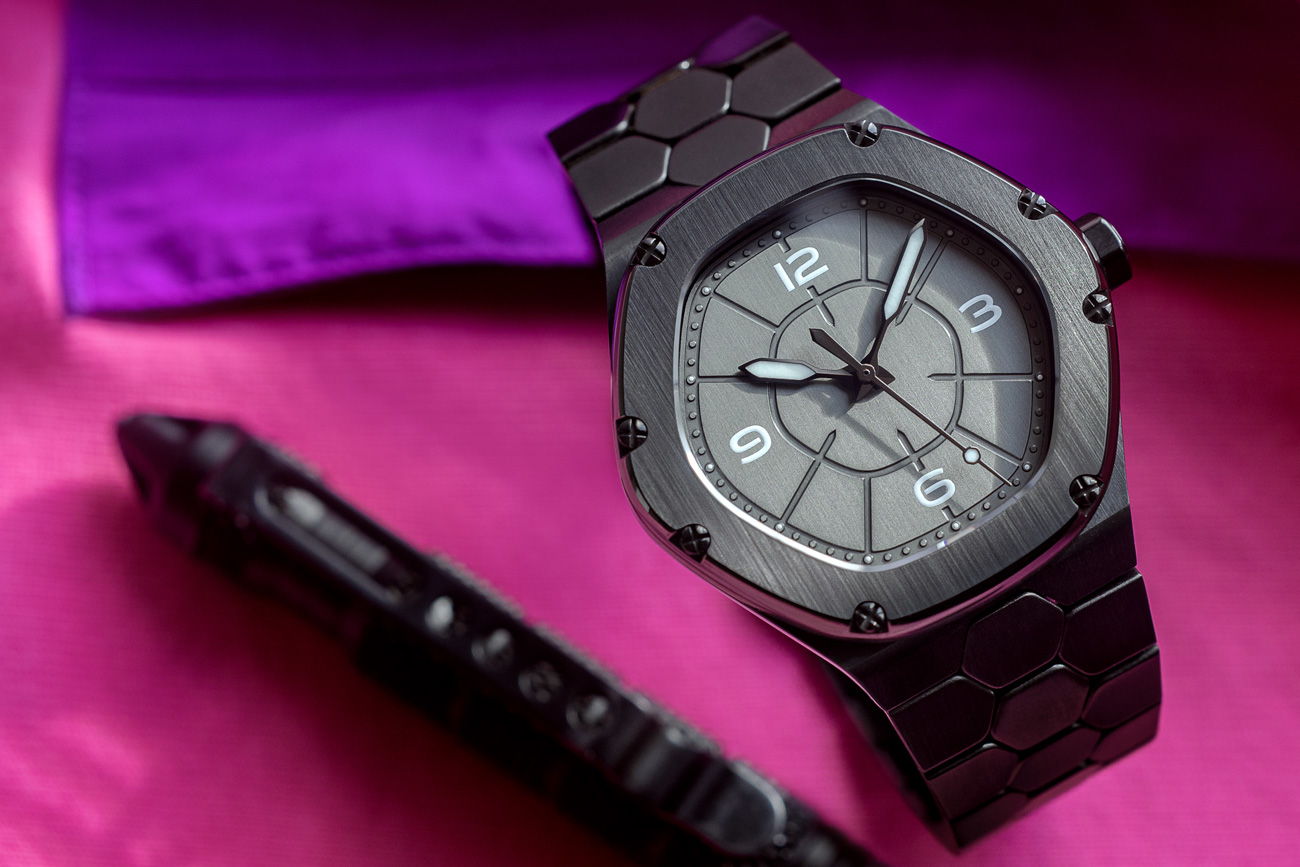
AA: Emmanuel, explain how the TC watch collection actually represents a very time-tested and approved timepiece concept, even though its shape and form feel distinctive.
ED: First, the combination of stainless steel case and bracelet, combined with a three hand-date automatic movement, is the most successful combo out there. Simply because it is the best “form-follows-function” package available for daily use. And design is a lot about form following function!
Second, the case construction of the TC uses the same idea of a flat surface sharply bent to go into the bracelet that Gerald Genta used with so much talent and success. This “Genta bend” allows us to have a perfectly integrated metal bracelet compared to watches where the metal bracelet needs a complex first link to go from flat to the curved form of the case. If you look at Rolex, which is the only brand to perfectly master this exercise, it needed 50 years to improve from an approximative flimsy piece of metal to the beautiful solutions it achieves now. But in terms of design, I would consider the Genta bend much more modern and consequential.
Then, on this basis, it’s up to you to develop your own language. And here, as ever, it is about finding a strong formal expression that stays approachable and likable. It is about being yourself and being recognizable in the overcrowded watch world. It is about generating passion. And this is an alchemy none can really explain that just happens or not.

AA: Matt, how do you explain to watch lover novices what is special about Dietrich? You and I agree that it takes some experience and exposure to understand what particular designers such as Emmanuel Dietrich bring to the table. To newbies, his work might just seem different for the sake of being different. How might you describe it?
MSJ: Dietrich has a conceptually driven design language that I typically only see at the “haute horology” level of watchmaking. Every Dietrich collection uses organic shapes and forms, resulting in a unique biomechanical looking watch. It sort of reminds me of H.R. Giger, without being frighteningly dystopian.
For me, Dietrich watches are a celebration of the relationship we have with things more precise and imperishable than ourselves. People are imperfect, we’re organic, we make mistakes — and yet we build machines that complete tasks with astonishing accuracy. We’re capable of measuring time with great precision yet, nevertheless, our perception of carefully measured time remains inconsistent. What a fascinating paradox!
If you look closely, you’ll notice that each collection plays with this concept. I just don’t think you’ll find another brand out there with a philosophy quite like this.
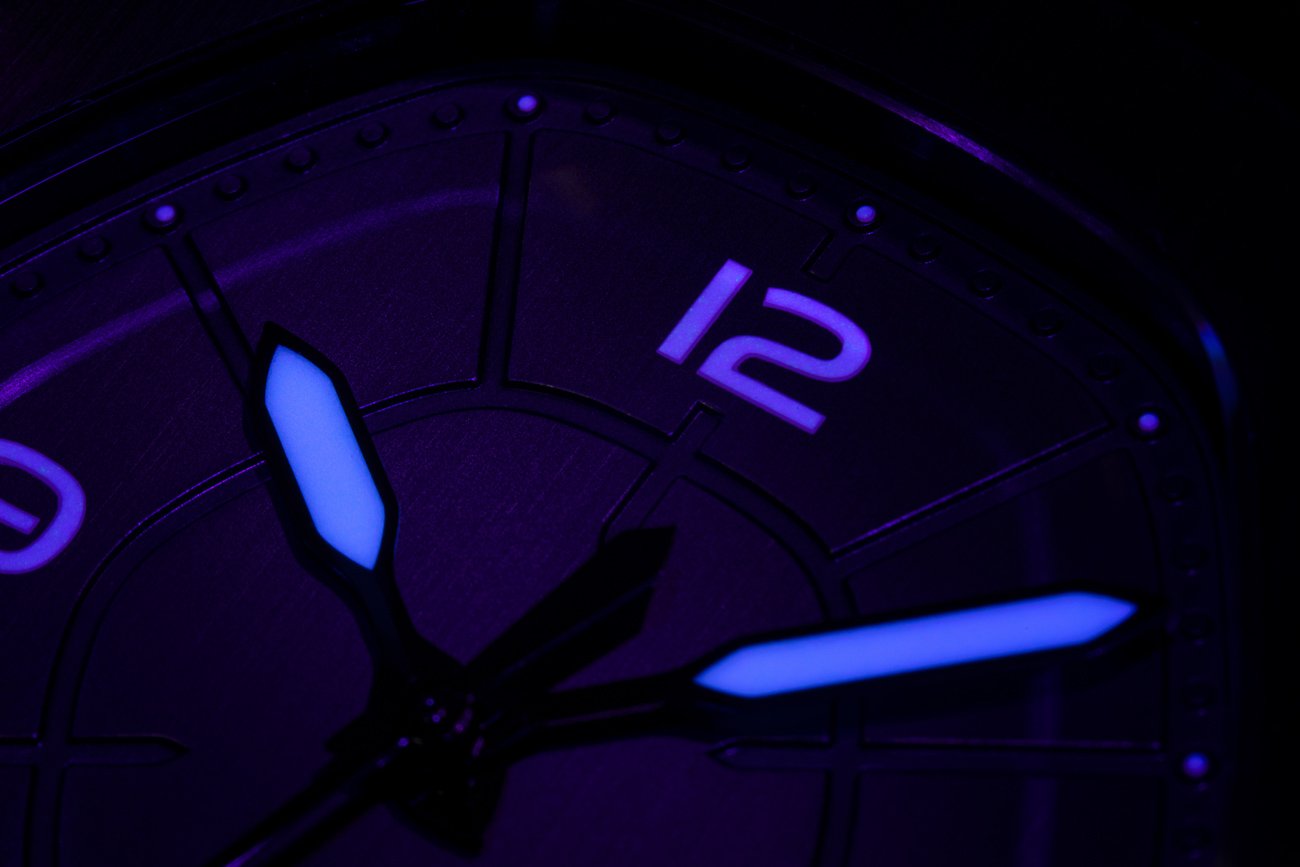
AA: Emmanuel, tell us about your design work outside of the Dietrich brand. What are some other watches or products you designed? How did you get your formative training and experience as an industrial designer and then as a wristwatch specialist designer?
ED: My passion for design goes back to my sixth year, when my mother told me, “If you want weapons to play with, you will have to fabricate them yourself!” Starting from that instant, I consequently ordered tools for all my following birthdays and Christmases and started producing not only the wooden swords and guns I was dreaming about but all possible items. Bicycles and watches were especially in my focus, and one friend of the family who was my mentor in the DIY world was, indeed, working on watch prototypes at the LIP factory in Besançon (I grew up in the French watch region, close to Switzerland). I learned a lot from him and inherited his passion for precision work
This led me to study cabinet making and then interior design — in Paris, at the Boulle school. I went immediately freelance afterward and started proposing my ideas to potential clients. Since watches were in my blood, I tried and succeeded with two first designs, one made entirely of plastic for a theme park in France (a concept I also presented to Hayek Senior for Swatch, who loved it but eventually turned it down) and another one made of leather that I to sold to Hermès, thanks to the exceptionally open-minded Jean-Louis Dumas, who was leading the company in this time. The watch was called “Harnais.” These two projects opened a lot of doors for me in the industry, and I designed over the following 20 years for many brands, especially the creative ones like the Calvin Klein license of the Swatch Group, in its bright years.
Apart from watches, I was so curious I designed almost everything. From disposable plastic spoons for Häagen-Dazs to office furniture for Haworth, from home furniture to technical items like garage tools or even medical devices. I learned a lot about various techniques, and a lot about watchmaking, visiting all my client workshops and factories and working with them on product development.
That led me to create my own universe in the watchmaking world, a logical step, even if I remain primarily a designer.
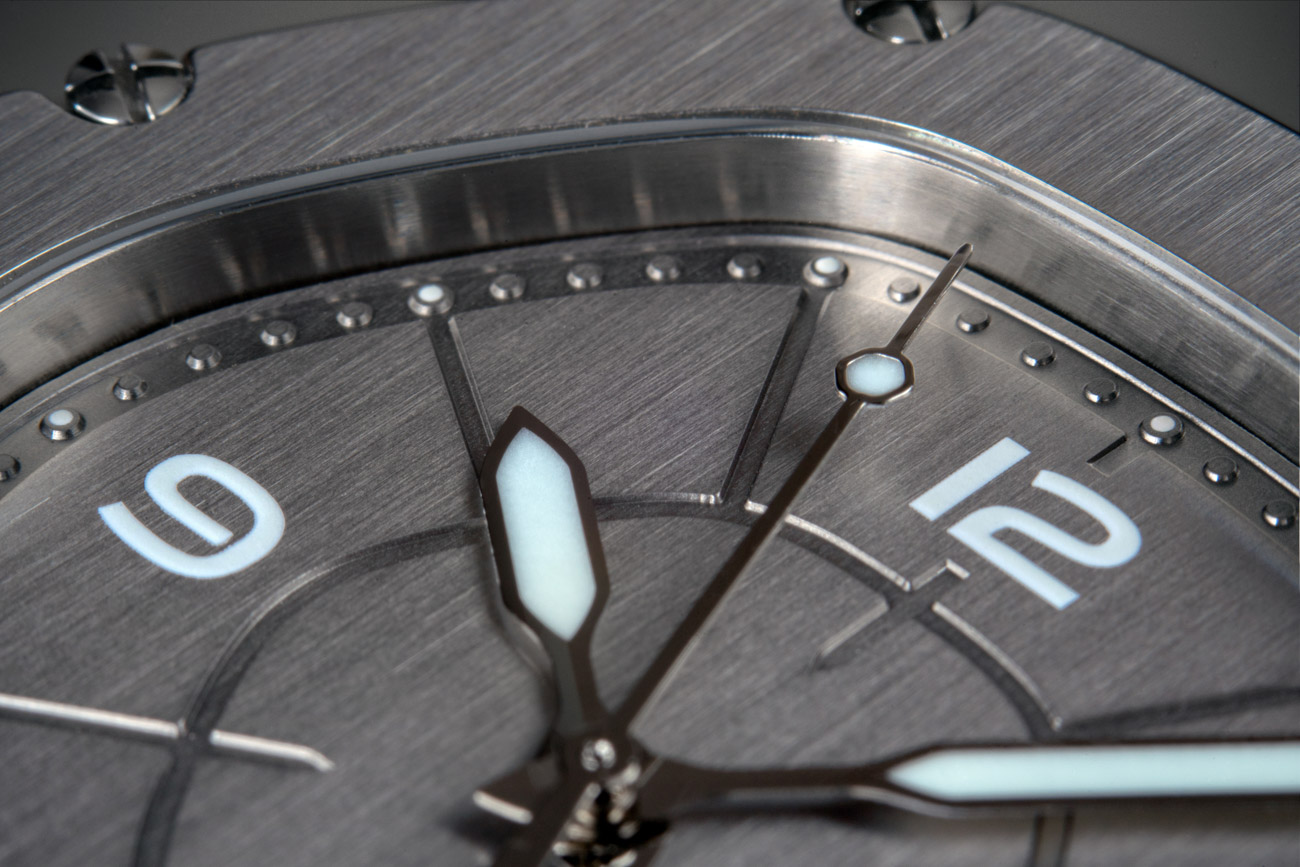
AA: Emmanuel, tell me a little bit about what type of wearing experience you intended for the TC collection when you originally conceived it. What type of watch lover did you see wearing it? In what types of contexts? In other words, what problem or style were you designing the TC as a solution for? Answer that for the TC Pure, and explain what new solution is being solved with the addition of a more minimalist dial for the Time Companion product collection.
ED: The TC should also be a perfect match for the independent-minded watch lover who seeks an alternative to the classics. He wants to show he has made a choice centered on his taste and not on social ranking. He wants to have a talking piece that opens a discussion with like-minded watch aficionados.
My first intention was to transport the wearing comfort I was able to achieve in the Organic Time to an integrated stainless steel watch. I think men are approaching fashion and accessories with strong functional criteria, and I like this, too. A suit must be as comfortable as it is good-looking. A watch, too. So, this was the start, a smooth metal bracelet (that doesn’t pinch hairs), a well-sized and formed case that lays comfortably on the wrist.
On this basis, I started to interpret the formal language I had developed with Organic Time in this context and decided to go for extensive work on the rounded six edges that I love so much. You can find this shape everywhere in the watch, and that gives the design a very strong, coherent identity.
I am still very happy with the result, but as a designer, maybe I had the feeling I went a bit too far toward classicism with the dial, and always dreamed to have some more daring and pure, where the visual link with the case and bracelet would be stronger. Being able to do this with Matt was the perfect occasion, and being a team gave us the strength to make the dial sterile, which I personally adore.
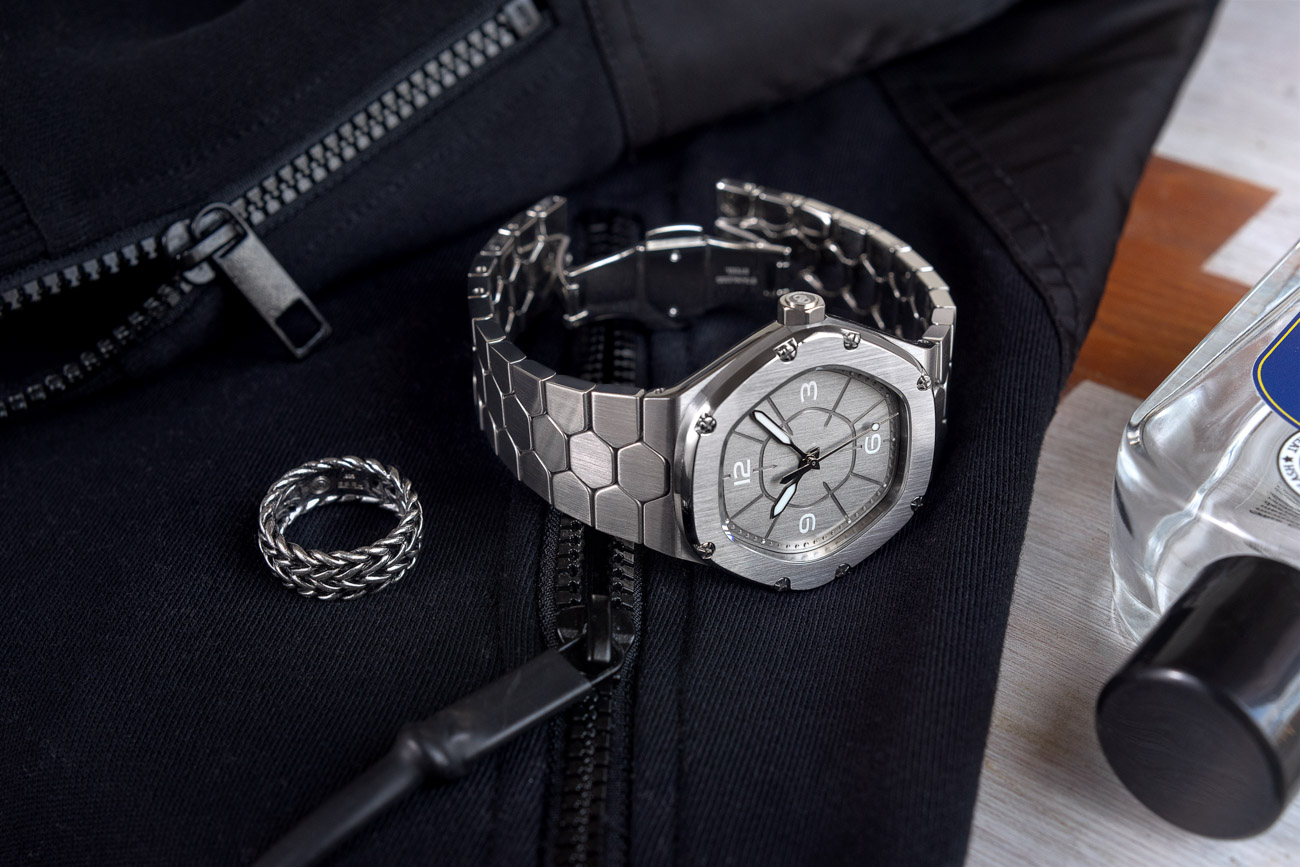
AA: Matt, you’ve designed watches before (together with me, for instance, on such products as the Laco RAD-AUX and Undone Aqua BLK + YLW) in a collaborative environment. What was it like collaborating on design with Emmanuel Dietrich?
MSJ: Since we are both design nerds, it was easy to communicate with Emmanuel. Quite simply, it was a very enjoyable and relatively relaxed process. Once I had Emmanuel’s blessing to be myself, I went off and developed some more concepts. One design became the “seedling” for the TC Pure.
We both kept pushing to explore different paths from that seedling concept. At one point, we thought of making a dial that clearly contrasted with the case. I played around with materials and colors for some time, but it just felt off. After that, we thought it would be cooler to just make it look like the whole head of the watch was milled out of a single chunk of metal. Like the whole of the watch was just some singular, unified thing. I’m glad we went that route.
At another point, Emmanuel had the idea we shouldn’t use dial feet, but rather two simple screws that would be visible on the surface of the dial. It was a real no-nonsense sort of utilitarian look that we both liked. However, it took away from the dial’s simplicity and symmetry, so it didn’t make the cut.
Gaining the courage to drop the logo took us both a while. We agreed that the sterile dial worked best with the concept direction, so after conferring with trusted colleagues, we got the guts to go ahead. We know that, typically, you want to see the branding on a product, but we both felt keeping the dial pure was the overriding factor. The dial is intended to echo the other forms already present in the design. It’s the pure, boiled-down essence of the greater thing. It couldn’t be interrupted by branding and work to the same effect.

AA: Matt and Emmanuel, what are just a few things you want timepiece lovers and the larger aBlogtoWatch audience to know or think about when viewing a Dietrich TC Pure watch on their wrist? What does this overall design and product mean to you, and what do you want people to know about this project years from now when TC Pure watches might be discovered by a new crop of enthusiasts eager to understand where they came from and what artistic and utilitarian purposes the line is meant to serve.
ED: I hope the watch community realizes this is a project fueled with passion and the love of sharing. Surely, the outcome should be business, and a reward that allows for further developments for all of us. But when I think back to the way this came to life, I am quite amazed and pleased that none of us three spoke of money for his involvement in the process at any time. There was always the idea to share the results, but we invested our talents and energies from scratch, without hesitation, for the sheer pleasure of doing it. This is something rare and the kind of moment I am living for. And then, as Matt is saying, each object we create is a bit of ourselves and our seeds of -hopefully good- taste in this world. We did our best here and tried hard to give an excellent product and a lot of pleasure at a fair price. I really cannot wait to see one on an unknown wrist one day. This is always my best reward.
MSJ: I really enjoy seeing how the light catches the dial when I’m wearing the TC Pure. The vertical brushing just pops at times, and I quite enjoy it. I’m not sure how to answer the rest without sounding grandiose, overblown, or slightly mad. I’d love for this watch to simply be remembered by the time future generations of watch enthusiasts crop up. Echoing an earlier point, the TC Pure is an imperishable extension of our creative selves. I’m just happy to be a small part of Dietrich’s legacy and make something cool with a designer I thoroughly respect. Price for each model is $2,000 USD. Purchase the stainless steel version here and the Black PVD version here.
aBlogtoWatch and Dietrich have a commercial relationship regarding the sale of TC Pure watches. Sales of Dietrich TC Pure watches will lead to some revenue-sharing for aBlogtoWatch, an important piece of information transparency the audience is entitled to.

